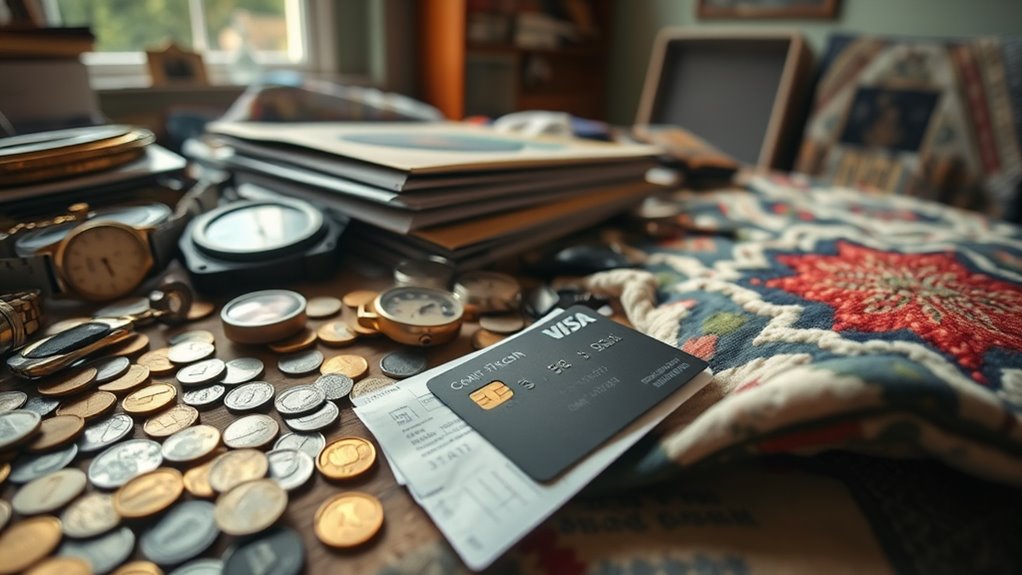Explore unconventional down payment methods to finance your property investment. You can use a line of credit for flexible access to funds or consider a credit card advance for short-term needs, though it comes with high-interest costs. Leverage your vehicle or cross-collateralize existing property for loans. Offer free rent to sellers or tap into government programs and non-profit support. Borrowing from retirement accounts can also help. Discover more strategies to suit your financial goals.
Key Takeaways
- Use a home equity line of credit to access funds based on your property’s value.
- Leverage a paid-off vehicle for a loan secured by its title.
- Negotiate free rent for the seller in exchange for down payment assistance or a lower purchase price.
- Explore government assistance programs or non-profit grants for down payment support.
- Borrow from retirement accounts, like 401(k) or IRAs, for penalty-free down payment funds.
Line of Credit
When considering a down payment, a line of credit can be a flexible option, allowing you to access funds as needed rather than borrowing a lump sum upfront. A home equity line or an equity line of credit lets you tap into your property’s value, providing a revolving source of funds you can use to buy a home. This approach can be beneficial if you’re short on cash but have built significant equity in your current property. Your mortgage lender may offer this option, but you’ll need to meet their credit and equity requirements. Keep in mind that local governments and government agencies often have specific guidelines for using such funds as a down payment. Interest rates on these lines are typically lower than personal loans, but they’re variable, so your payments may fluctuate. Using a line of credit for real estate investments can enhance your purchasing power by leveraging property equity without liquidating assets. Always consult your financial advisor to confirm this method aligns with your long-term goals.
Credit Card Advance

You can use high-interest cash advances from credit cards for down payments, though costs are steep. Alternatively, balance transfer strategies to 0% interest cards offer short-term financing options. Make certain proceeds fund property investments exclusively to avoid financial pitfalls. This approach aligns with creative financing strategies, which bypass traditional bank loans and minimize upfront costs.
High-Interest Cash Advances
While high-interest cash advances from credit cards can be a quick way to fund a down payment, they come with significant costs. These advances often carry APRs exceeding 25%, and you’ll typically pay a cash advance fee of 3-5% of the borrowed amount. If you don’t pay off the balance quickly, the accumulating interest can lead to substantial debt. Here’s what you need to evaluate:
- Interest Rates: High-interest charges can erode any profits you make from your investment.
- Cash Advance Fees: Borrowing money through a credit card advance frequently includes upfront costs.
- Repayment Plan: Make certain you have a strategy, like using property rehab proceeds or cash flow, to cover payments and avoid long-term financial strain.
- Alternative Financing: Consider exploring home equity loans or seller financing as less costly alternatives to credit card advances.
Carefully assess whether this method aligns with your ability to make money and manage credit responsibly.
Balance Transfer Strategies
Balance transfers to 0% interest credit cards offer an alternative to high-interest cash advances for funding a down payment. By transferring existing debt to a card with a promotional 0% rate, you temporarily avoid accruing interest, freeing up funds for your down payment. However, weigh the balance transfer fees against potential savings from traditional loans to confirm it’s cost-effective. High-interest cash advances can inflate debt, making this strategy less appealing. To minimize financial strain, use proceeds from property income or redirect savings account funds to pay off the credit card balance before the promotional period ends. This approach helps you manage debt responsibly while securing your down payment. Always confirm terms and fees to maximize the benefits of this strategy. Seller financing can also be explored as an alternative to traditional loans, offering flexibility in down payment arrangements.
Rehab Financing Options
When considering rehab financing, high-interest cash advances from credit cards provide immediate funding but carry significant risks due to steep fees and APRs often exceeding 25%. This method works best for experienced investors who can guarantee timely property resale or rental income to cover the debt. To manage this approach effectively, consider the following steps:
- Assess Cash Flow – Calculate potential rental income or resale profits to confirm they outweigh the high interest and fees.
- Plan Renovation Costs – Allocate proceeds precisely to avoid misusing funds for personal expenses. Unexpected expenses like foundation issues can significantly reduce profits, so include a contingency in your budget.
- Set Repayment Deadlines – If using a 0% balance transfer, adhere to a strict timeline to avoid interest spikes.
While risky, credit card advances can be offset by strategic property improvements and quick turnaround. Use this option cautiously to avoid long-term financial strain.
Your Vehicle

Using a paid-off vehicle as collateral can help you secure a loan for a real estate down payment. By leveraging your vehicle’s title, you’re able to access an amount of money that can cover or supplement your down payment without selling the asset. Banks often offer cash against the vehicle, potentially at interest rates lower than the returns on your property investment. However, you’ll need to factor in the new car payment generated by the loan. Make certain the income from the property can cover this expense alongside other costs, such as maintenance or mortgage payments. This strategy allows you to preserve liquidity while still investing in real estate. Before proceeding, assess your financial stability to confirm you’re able to manage both the car loan and property expenses effectively. Borrowing against your vehicle is a practical option if you’re confident in the property’s cash flow potential. Consider exploring business term loans as an alternative if you prefer a more structured repayment plan.
Free Rent to the Owner

If the property’s seller requires time to relocate, you can propose offering them free rent for a set period in exchange for a reduced purchase price or down payment assistance. This strategy benefits both parties: the seller shifts smoothly, and you gain ownership while potentially generating rental income from other units. To implement this method effectively, consider the following steps:
- Negotiate the terms: Clearly define the duration of free rent and how it offsets the purchase price or down payment.
- Assess cash flow: Guarantee the property’s rental income from other units covers your costs during the free rent period.
- Document the agreement: Formalize the terms in writing to avoid misunderstandings and guarantee compliance with local laws.
This approach is particularly advantageous in multi-unit properties, as it allows you to buy a house while maintaining income streams. For prospective buyers, free rent arrangements can make Owner financing more accessible and flexible.
Cross Collateralization

While free rent arrangements can help reduce upfront costs for buyers, cross collateralization offers another strategic option for expanding your real estate portfolio. This method allows you to use your existing property’s equity as a down payment to buy additional properties. It leverages the lendable equity from one real estate asset to finance another, eliminating the need for new down payment funds. However, you’ll tie multiple properties to a single mortgage, which increases financial risk if one defaults. To mitigate this, refinancing can untie properties, safeguarding your assets. Cross collateralization is ideal for investors looking to save money on upfront costs while expanding their portfolio through loan programs like DSCR loans, which focus on property cash flow rather than personal income.
| Pros | Cons |
|---|---|
| No new down payment required | Multiple properties tied to one loan |
| Enables continuous property acquisition | Higher risk if one property defaults |
| Leverages existing equity | Limited flexibility in selling assets |
| Reduces upfront costs | Potential complications in refinancing |
| Expands real estate portfolio | Requires careful risk management |
Pay Off Credit Card Balances

Paying off credit card balances is a pivotal step in preparing for a down payment, as it can free up significant funds and improve your financial position. Eliminating high-interest credit card debt not only saves you a lot of money in interest but also boosts your credit score, which can secure better mortgage rates. Make sure to prioritize cards with the highest interest rates first to maximize your savings, and consider using strategies like the avalanche method to accelerate repayment. Redirecting funds from credit card payments toward your down payment savings can help you make substantial progress toward your homebuying goal.
- Boost your credit score: Clearing credit card balances improves your credit utilization ratio, enhancing your creditworthiness.
- Save on interest: Paying off credit cards reduces high-interest payments, freeing up cash for saving.
- Refocus funds: Redirect monthly payments from cards and saving into your down payment fund.
Use Special Programs

You may qualify for government assistance programs that help with down payments through grants or low-interest loans. Check with your State Housing Finance Agency for resources tailored to affordable homebuying in your area. Additionally, explore non-profit organizations that offer down payment aid, especially if you’re a first-time buyer or meet specific income criteria.
Government Assistance Programs
Government assistance programs can help make homeownership more accessible by providing financial support for down payments and closing costs. If you’re a first-time homebuyer or a qualified borrower, you might not have to worry about how much money you’re able to put toward a down payment. These payment assistance programs, available through state and local agencies, can cover a significant portion of the upfront costs.
- Grants and Loans: Some programs offer grants up to $20,000 or low-interest loans that don’t need repayment until you sell or refinance.
- Wide Eligibility: Over 87% of U.S. homes qualify for assistance based on factors like income, credit score, and location.
- Easy Access: Use resources like HUD’s database to find programs tailored to your needs.
Take advantage of these opportunities to reduce your initial financial burden.
Non-Profit Organization Support
Non-profit organizations play an essential role in helping potential homebuyers overcome financial barriers to homeownership through specialized programs. Local non-profits, like NeighborWorks America, offer down payment assistance through grants or second mortgages with favorable terms. The National Homebuyers Fund provides up to 5% of the loan amount for down payment and closing costs through its partners. Habitat for Humanity eliminates down payment requirements for low-income families, offering affordable mortgages instead. Additionally, the Homeownership Preservation Foundation provides counseling and down payment support to prevent foreclosures. Many local non-profits, such as Operation Hope, combine financial education with down payment matching programs to guarantee buyers are prepared. By leveraging non-profit organization support, you can access resources that make homeownership more attainable while building financial confidence.
State Housing Finance Agencies
By leveraging resources from State Housing Finance Agencies (HFAs), you can access down payment assistance programs designed to make homeownership more affordable. These programs help reduce the amount you need to save for your first property while offering support through grants or low-interest loans. HFAs also provide access to various types of mortgages, including FHA, VA, and USDA loans, which often require lower down payments.
- Grants and Loans: Down payment assistance programs cover 3%-5% of the purchase price, easing upfront costs.
- Affordable Mortgages: Government-backed loans require little to no down payment, making mortgages and home purchases more accessible.
- Additional Support: HFAs offer homebuyer assistance programs that include closing cost aid and reduced interest rates, further lowering expenses.
Borrow From Retirement Accounts

If you’re considering a home purchase, borrowing from retirement accounts like a 401(k) or IRA can provide funds for a down payment. One option is a 401(k) loan, which might let you borrow up to $50,000 or 50% of your vested balance, whichever is less. Even though you’re paying interest, it goes back into your own account, and you have a period of time—typically five years—to repay it. However, if you leave your job before repaying the loan, you’ll need to settle the balance within 60 days or face penalties. For IRAs, first-time homebuyers can withdraw up to $10,000 penalty-free, but it may still be subject to income tax. If you’ve got a Roth IRA, you can access contributions tax-free, but earnings might trigger taxes and penalties if you’re under 59½. These methods can help secure your mortgage right, but they require careful planning to avoid long-term financial strain.
Conclusion
Think of your down payment as a key—it opens doors to your dream home, but it’s not always forged through traditional means. Whether you leverage assets, tap into retirement savings, or negotiate creative terms, each method represents a unique path to that symbolic threshold. Just as a river carves its way through stone, your resourcefulness can shape your financial journey, proving that the road to homeownership is as diverse as the keys that open it.




